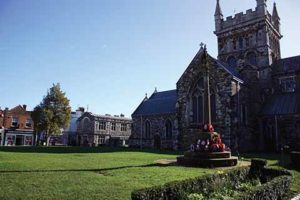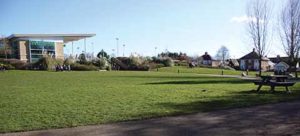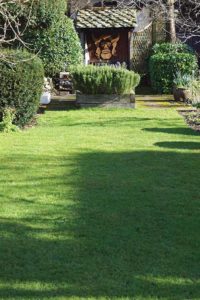Wimborne’s green places
Joël Lacey takes a look at some of the different places for wildlife, spectating and contemplation around Wimborne
Published in April ’18
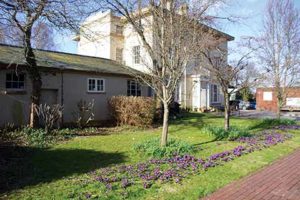
A splash of colour amidst the lawned area outside Allendale House, yet another green space in Wimborne to stop and sit and stare
There is often a clamour to keep urban ‘green spaces’ undeveloped and available to all. But why? What is the drive to maintain lawned spaces in the middle of urban areas?
Part of the answer lies in the fact that most urban areas are miles away from the countryside and their populations starved of interaction with nature. That is clearly not the case with Wimborne, which has countryside within a ballista thrown in any direction. No, the answer is not only that green spaces are where you go to get away from the town, but also often very importantly meeting places and centres of community.
With our lives lived more and more indoors and more and more on screen, simply getting outside and interacting with others – whether directly or with them just as extras in your own cinematic vision – is a great thing to do for one’s own physical and mental wellbeing. Green places are simply good for us.

A simple but powerful explanation about why it is good to get outdoors on the sundial in the Jubilee Gardens
Compared with other towns in Dorset, Wimborne Minster has a reasonably easily defined centre, being bounded to the south by the Stour, Cowgrove to the West, Kingston Lacy to the north and Leigh to the east.
One of the problems with a well-defined centre, though, is that it makes in inevitable that the areas ripe for development become fewer and smaller as history rolls on. Once the industrial brownfield sites have been used up there is just the greenfield left. Whilst those parts on the edge of the conurbation can (and have) fallen prey to the inexorable march of development Wimborne Minster town itself has a number of green spaces that have resisted the scourge of development, or better yet, turned it to their advantage.
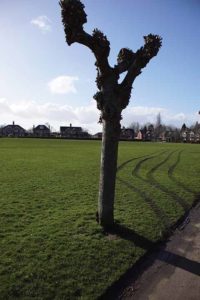
Redcotts playing fields, with the skate park and monolithic ping pong table are a great place to take kids to blow off steam
The old Cricket Club’s location opposite Crown Mead made Wimborne a little special when one visited it, and the sound of leather on willow is always an evocative one. There was something almost anachronistically charming about a town-centre cricket club, but there is no getting away from the fact that what is now the green outside Waitrose is fully accessible to the public and the town has the benefit of a supermarket with its own additional town parking. The cricket club’s new home at The Leaze (behind the Model Town) benefits from a new Pavilion while the old cricket pitch is now a perfect people watching place and picnic venue in the heart of the town and is equipped with picnic tables and benches.An older version of this green is the spiritual home of the town – the Minster Green, although al fresco diners need to bring their tablecloths or rather picnic blankets as well as their food.
With its stunning backdrop of the Minster itself, dedicated to St Cuthberga, the sister of the former King Ina of Wessex, this green is also a handy first choice of meeting place. At the opposite end of that particular list of places is an area which lies between Stone Lane and St Margaret’s Hill; it is Wimborne Cemetery.
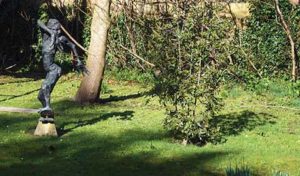
Although not a publicly accessible space by foot, this sculpture by the library, on the banks of the River Allen, is another green place in Wimborne to stand and stare
Although it’s not somewhere one would normally choose to meet, it is a nice quiet spot to commune with nature and for quiet contemplation. Churchyards and graveyards generally are good spots to see wildlife as the managed lawns and wilder areas meet.
One of the great things about turf, the backdrop of most green spaces, is that it is better for falling on than concrete, tarmac or cinders, hence its continued choice as the surface for most sporting areas, whether the football club on the road up to the school, the cricket club behind the model town or the rugby club at the centre of its own estate at Leigh Park near the market.
Although less often used for tennis courts these days, grass is still immensely popular as a sporting surface, but turf should not be considered merely a covering, but – as those who remove their shoes and socks will attest – it’s also a wonderfully tactile surface on which to walk or sit.
For sensory greenery of different kinds there is the sensory garden within the Model Town, lavender borders in the Museum garden and a whole range of olfactory treats in terms of the squeezable, smellable herbs within the Jubilee gardens’ borders. So give your ears, eyes, feet, fingers and noses a treat and explore some of Wimborne’s green spaces.
